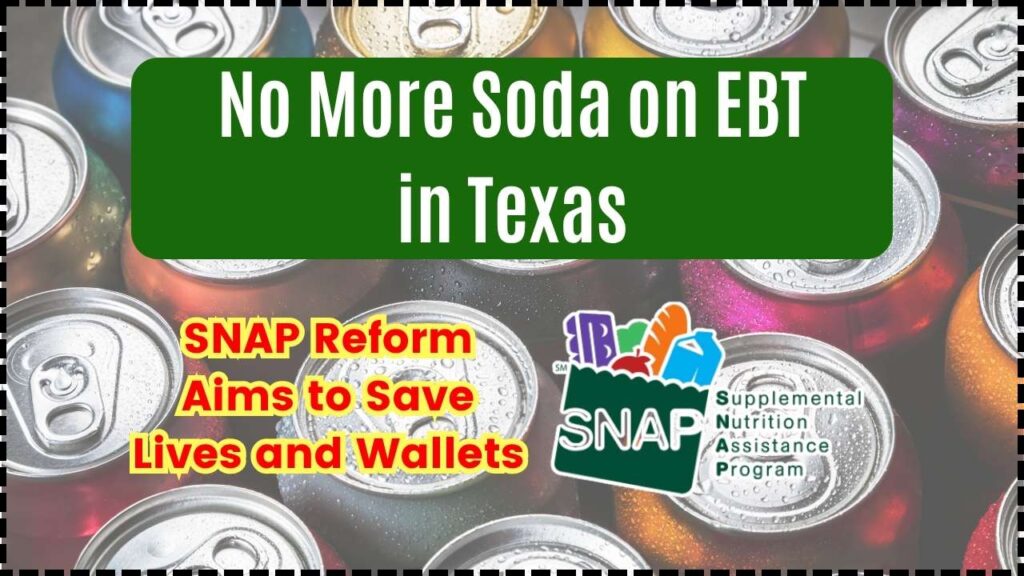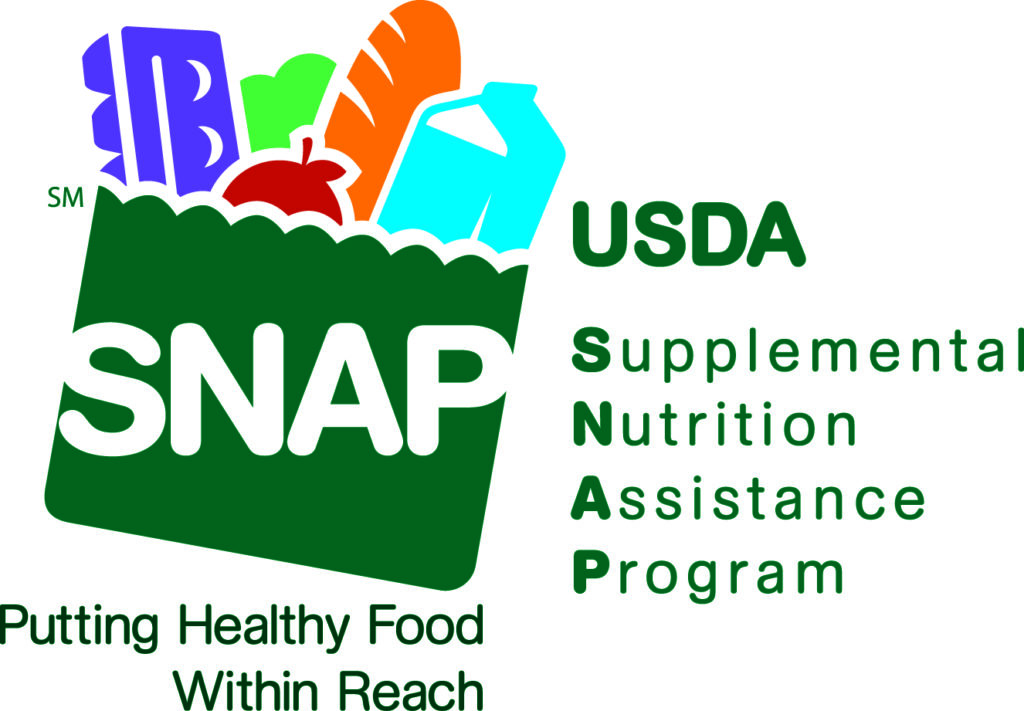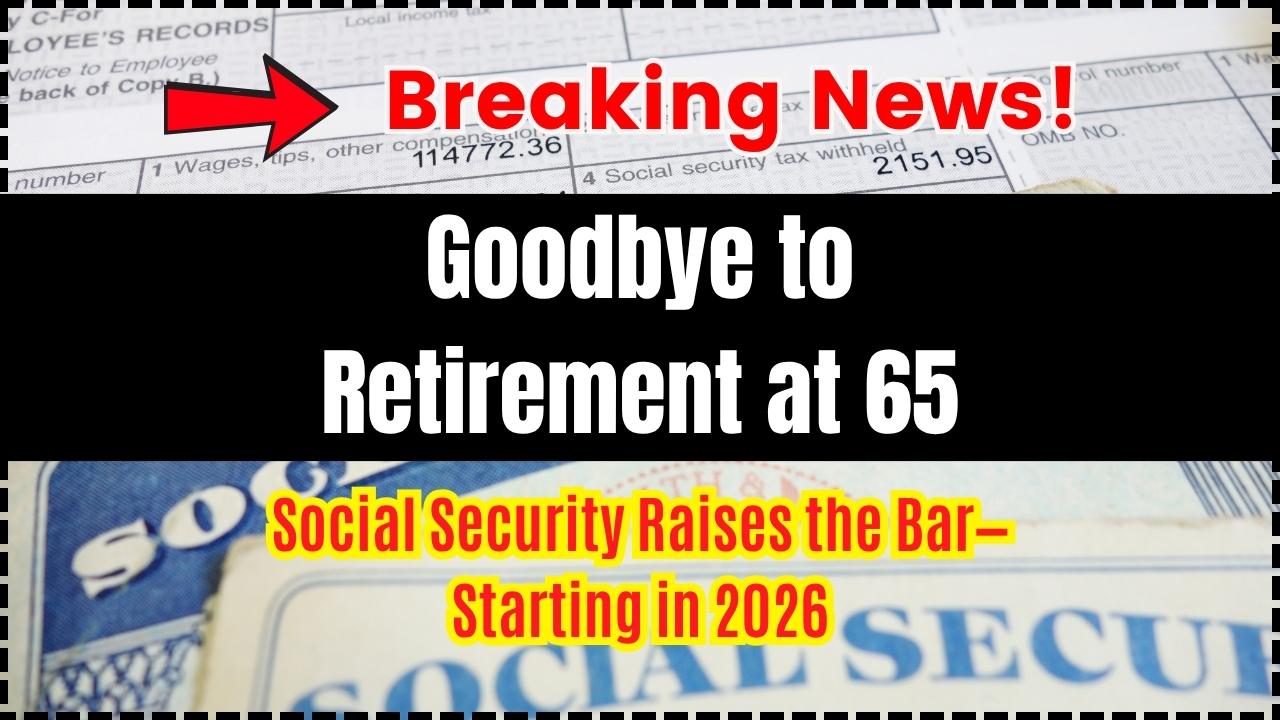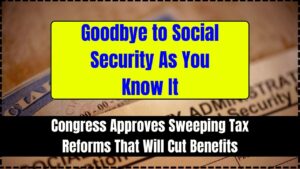No More Soda on EBT in Texas—that’s the phrase making headlines and sparking heated debate across the Lone Star State. The newly proposed legislation, Senate Bill 379, would prohibit the purchase of sugary beverages and candy using Supplemental Nutrition Assistance Program (SNAP) benefits. The move, backed by Texas lawmakers and awaiting federal approval, is part of a broader initiative to improve public health, reduce obesity-related disease, and ensure taxpayer dollars support nutrition—not junk food.
Texas isn’t alone in this effort. Several other states are moving in a similar direction, with support from the federal government under the “Make America Healthy Again” (MAHA) initiative. But Texas, with its size and influence, could set the tone for nationwide SNAP reforms. So, what does this mean for families, retailers, health professionals, and policymakers? Let’s break it down in clear, practical terms.
No More Soda on EBT in Texas
“No More Soda on EBT in Texas” is more than a catchy headline—it’s the start of a significant shift in how we think about food assistance, public health, and personal choice. With the potential to improve diets, save lives, and reduce long-term medical costs, the reform is both promising and controversial. As Texas awaits USDA approval, families, retailers, and health professionals have time to prepare. Whether this becomes a national trend or a cautionary tale will depend on how the policy is rolled out—and how well it balances public health with food equity.

| Topic | Detail |
|---|---|
| SNAP users in Texas | 3.5 million people |
| Total SNAP benefits (April 2025) | $616 million statewide |
| Average benefit per person | $378/month |
| Spending on sugary items | ~20% of SNAP funds; 9.3% on sugary beverages |
| Effective date of SB 379 | September 1, 2025 (pending USDA waiver) |
| States with similar waivers | Arkansas, Idaho, Utah, Indiana, Iowa, Nebraska |
| Potential health impacts | 2.4% obesity reduction, 1.7% drop in type 2 diabetes, 52,000+ heart/stroke events avoided over 10 years |
| Official source | Texas Health and Human Services Commission |
What Is SNAP and Why the Change?
SNAP, commonly referred to as food stamps, is a federal program designed to help low-income individuals and families buy nutritious food. In Texas, benefits are delivered through the Lone Star Card, an Electronic Benefit Transfer (EBT) card. While SNAP already excludes items like alcohol, tobacco, and prepared hot meals, it has never banned sugary drinks or candy—until now.
SB 379 would restrict any drink containing 5 grams or more of added sugar or artificial sweeteners per serving. It also includes most candy. However, it does not restrict items like 100% fruit juice, milk, or plant-based milk alternatives.
Why Now?
Chronic diseases like obesity, diabetes, and heart disease are on the rise in Texas and nationwide. These conditions are closely linked to diet—particularly high intake of added sugars. According to the Centers for Disease Control and Prevention (CDC), over 42% of American adults are obese, and type 2 diabetes affects nearly 37 million people.
In Texas, SNAP households often face limited access to healthy food options, particularly in rural areas and urban food deserts. Coupled with lower-income levels and limited nutrition education, this leads to high consumption of inexpensive, calorie-dense foods—like soda and candy. Public health officials argue that removing these items from SNAP eligibility could have a major impact on overall diet quality and long-term health.

How SB 379 Works: Step-by-Step
1. Restricted Items Defined
The bill targets:
- Carbonated soft drinks with 5g or more of added sugar or any artificial sweetener
- Candy, chocolate bars, and most packaged sweets
Exempt:
- Juices with at least 50% real fruit/vegetable content
- Milk and milk substitutes like soy or almond milk
The bill specifically follows USDA food codes for easier implementation across retail systems.
2. Store and Retail Compliance
Grocery stores and corner shops must update their POS (Point-of-Sale) systems to recognize and block restricted items at checkout for SNAP users. This requires software updates and product mapping. Large chains like H-E-B, Walmart, and Kroger already have these capabilities, but smaller local stores may struggle with the cost and technology.
3. USDA Waiver and Federal Approval
Although the Texas legislature has passed SB 379, the USDA must approve a formal waiver before any changes can be enforced. As of June 2025, the waiver request is under review. If approved, implementation begins September 1, 2025.
4. Rollout and Monitoring
If approved, the reform will go into effect statewide. SNAP retailers will be given guidance to train staff and communicate changes to customers. State health agencies will monitor compliance, purchasing data, and health outcomes over time.
Arguments in Support of No More Soda on EBT in Texas
Supporters of SB 379 argue that SNAP’s mission is to support nutrition, not just calorie access. Here are key reasons they back the reform:
Improves Public Health
A Stanford study estimated that restricting sugary drinks from SNAP could reduce obesity by 2.4% and type 2 diabetes by 1.7%. Over a decade, it could prevent more than 52,000 heart attacks, strokes, and diabetes-related deaths.
Saves Taxpayer Money
Chronic diseases tied to poor diet are responsible for hundreds of billions in healthcare costs. Medicaid and Medicare pay a large share of those bills. Advocates argue that reducing sugar consumption through SNAP reform could save the system billions.
Aligns with Federal Trends
The USDA’s MAHA program is encouraging states to tighten SNAP food rules. Arkansas, Indiana, Idaho, and Utah have already received USDA waivers, with similar reforms scheduled to begin in 2025–2026.
Criticisms and Concerns
Despite its goals, SB 379 has drawn criticism from public health experts, food advocates, and SNAP recipients.
Limited Access to Healthy Foods
Rural communities and low-income neighborhoods often lack full-service grocery stores. Healthy options like fresh fruits and vegetables may be unavailable or unaffordable. Critics argue that simply banning certain foods without providing affordable alternatives could worsen food insecurity.
Stigma and Discrimination
Some say the policy implies that low-income people can’t be trusted to make food choices. This feeds into existing stigmas around government assistance programs and risks alienating recipients.
Retail Challenges
Smaller retailers may lack the budget or infrastructure to upgrade systems. Some might stop accepting SNAP altogether, further reducing access to food for vulnerable populations.
Lack of Positive Incentives
Several studies show that pairing restrictions with incentives—like doubling SNAP dollars when spent on produce—has the strongest effect on improving diet. Programs like Double Up Food Bucks and Produce Rx have proven more popular and effective in pilot studies.
Real-World Example: Arkansas
Arkansas has been granted a USDA waiver and is set to enforce similar restrictions starting July 2026. With over 120,000 SNAP households and high rates of diabetes, state leaders hope the reform will reverse trends. Local food banks are partnering with schools and clinics to provide education and support.
This case could offer Texas a blueprint—highlighting potential roadblocks and success factors before enforcement begins.
Practical Advice for Families and Retailers
For SNAP Users:
- Start replacing sugary drinks with water, unsweetened tea, or 100% fruit juice.
- Use frozen or canned fruits and vegetables—cheaper and longer-lasting than fresh produce.
- Visit local food pantries that offer produce boxes or healthy meal kits.
- Follow MyPlate.gov for free recipes and meal plans on a budget.
For Small Retailers:
- Contact the Texas Department of Agriculture or local business associations for help with POS upgrades.
- Reconfigure store layouts to highlight healthy items near checkout.
- Offer discounts on fresh foods to non-SNAP customers to increase overall sales.
For Policymakers and Health Professionals:
- Fund SNAP-Ed programs to teach meal prep, shopping tips, and nutrition basics.
- Pilot incentive programs like fruit/vegetable discounts before, during, and after implementation.
- Partner with universities and nonprofits to collect data and feedback from affected communities.
SNAP Benefits Secrets Revealed – How Your State Could Boost Your Food Assistance!
Texas SNAP Recertification June 2025: Submit by This Date or Risk Losing All Benefits
SNAP June 2025: Exactly When Texas Residents Will Get Their Food Stamps This Month











